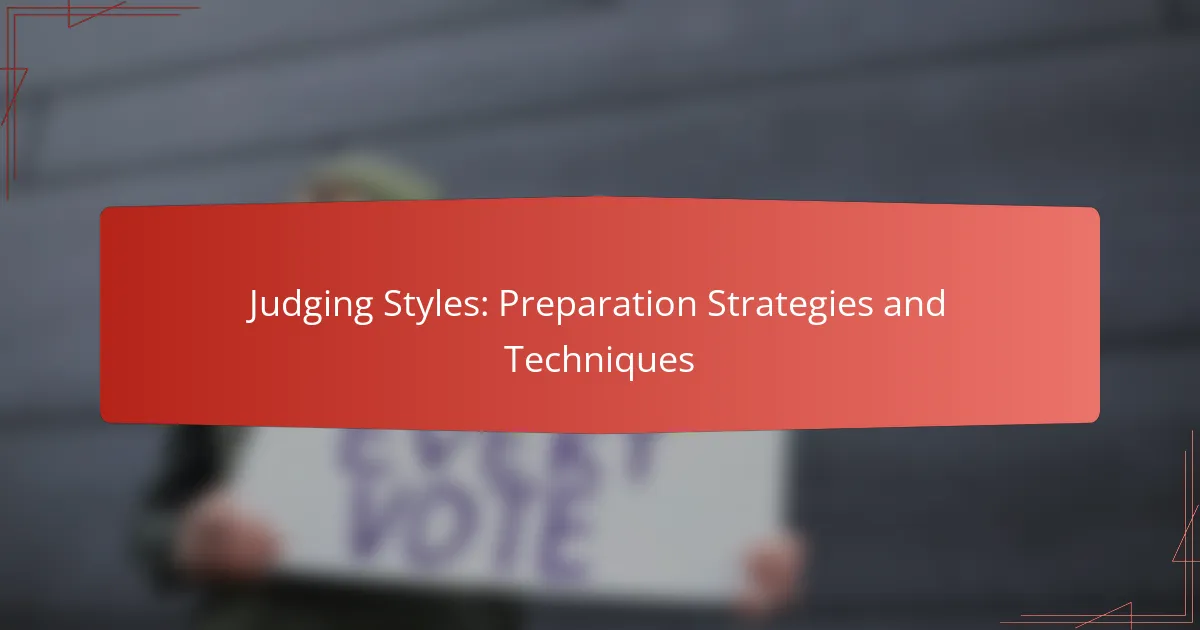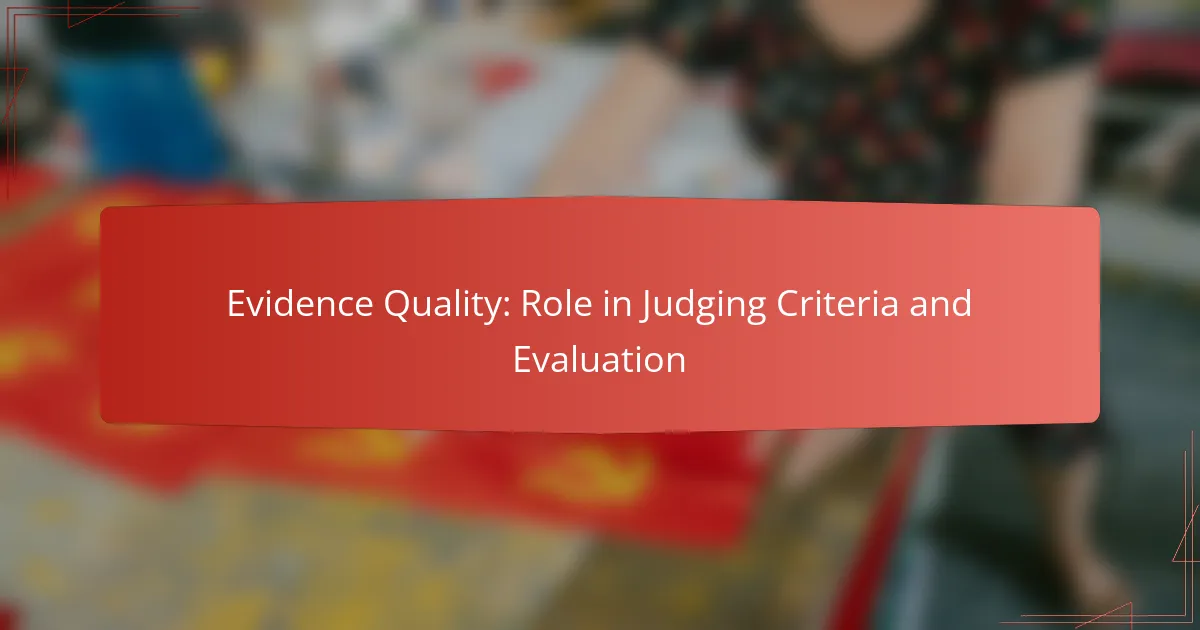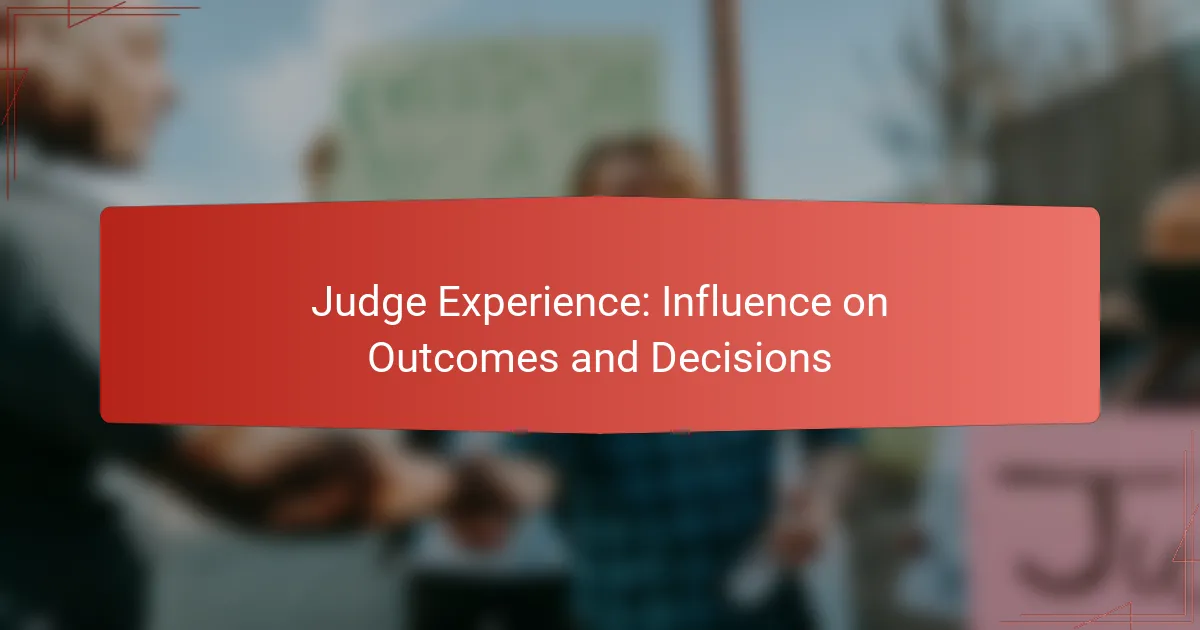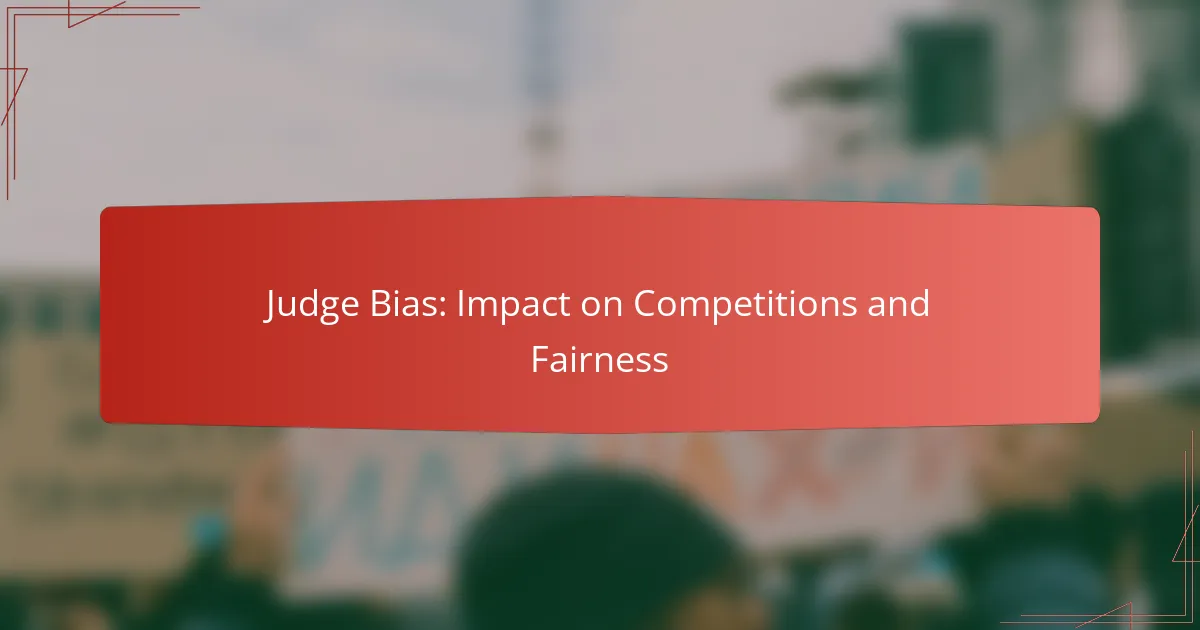Effective preparation strategies for judging styles are essential for enhancing decision-making and ensuring consistency in evaluations. By employing thorough research, practice, and feedback, judges can refine their skills and understanding of criteria. Additionally, utilizing structured techniques and specialized tools can streamline the judging process and improve overall accuracy.
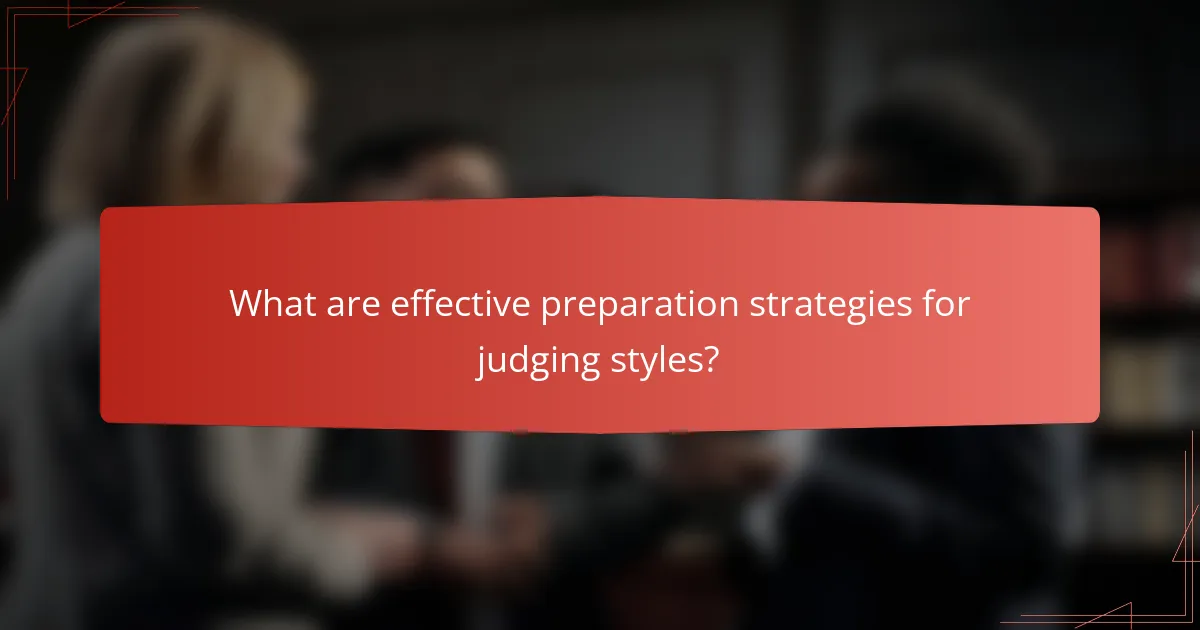
What are effective preparation strategies for judging styles?
Effective preparation strategies for judging styles include thorough research, practice, and feedback. These approaches help judges understand criteria, enhance their skills, and refine their decision-making processes.
Researching judging criteria
Understanding the judging criteria is crucial for effective evaluation. Judges should familiarize themselves with the specific standards and expectations relevant to their field, whether it be sports, competitions, or academic assessments.
Reviewing official guidelines, past judging rubrics, and examples of successful evaluations can provide clarity. This foundational knowledge ensures that judges can apply criteria consistently and fairly.
Practicing with mock scenarios
Engaging in mock scenarios allows judges to simulate real judging situations. This practice helps them develop their decision-making skills and become comfortable with the judging process.
Judges can create or participate in practice sessions that mimic actual events, using sample performances or submissions. This hands-on experience can highlight areas for improvement and build confidence.
Gathering feedback from peers
Receiving feedback from fellow judges or mentors is an invaluable part of preparation. Constructive criticism can reveal blind spots and enhance a judge’s understanding of their strengths and weaknesses.
Judges should actively seek input after mock scenarios or actual events, focusing on specific aspects of their performance. This collaborative approach fosters growth and encourages continuous improvement.
Analyzing past judging experiences
Reflecting on past judging experiences can provide insights into effective strategies and common pitfalls. Judges should review their decisions, considering what worked well and what could be improved.
Keeping a journal of experiences, including outcomes and personal reflections, can help identify patterns and inform future judgments. This analysis is essential for developing a more nuanced understanding of judging styles.
Creating a judging checklist
A judging checklist serves as a practical tool to ensure consistency and thoroughness. This checklist should include key criteria, evaluation points, and any specific considerations relevant to the judging context.
Judges can customize their checklists based on the type of event or competition. Utilizing this tool helps streamline the judging process and minimizes the risk of overlooking important elements during evaluations.
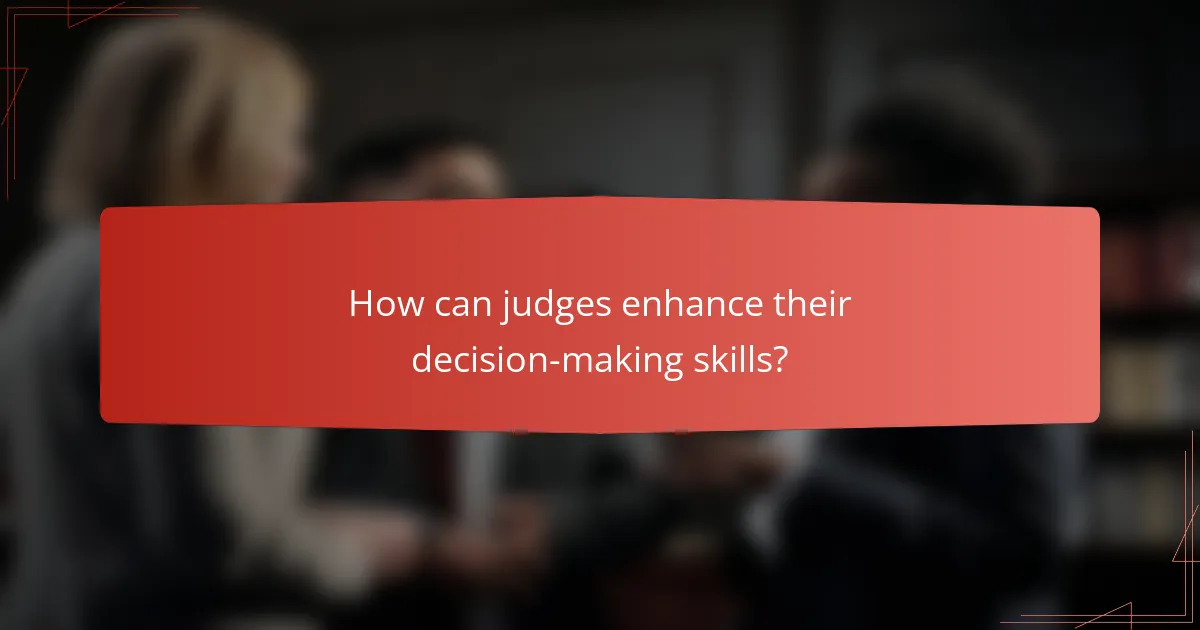
How can judges enhance their decision-making skills?
Judges can enhance their decision-making skills by employing structured techniques that promote clarity and consistency in their evaluations. These strategies include utilizing decision matrices, implementing reflective practices, and engaging in collaborative judging.
Utilizing decision matrices
Decision matrices are tools that help judges systematically evaluate options based on defined criteria. By assigning weights to various factors, judges can quantify their assessments, making the decision process more transparent and objective.
For example, a judge might create a matrix to assess different candidates based on criteria such as experience, qualifications, and performance. Each criterion can be scored, allowing for a clearer comparison of candidates and reducing bias.
Implementing reflective practices
Reflective practices involve judges taking time to review their past decisions and the reasoning behind them. This self-assessment can uncover patterns in decision-making, highlighting areas for improvement.
Judges can maintain a reflective journal to document their thought processes and outcomes. Regularly reviewing these entries can help identify biases or recurring mistakes, leading to more informed future decisions.
Engaging in collaborative judging
Collaborative judging involves working with other judges to discuss and evaluate cases collectively. This approach fosters diverse perspectives and can lead to more balanced decisions.
Judges can form panels to deliberate on complex cases, sharing insights and debating interpretations of the law. This collaborative effort not only enhances decision quality but also builds a supportive community among judges.
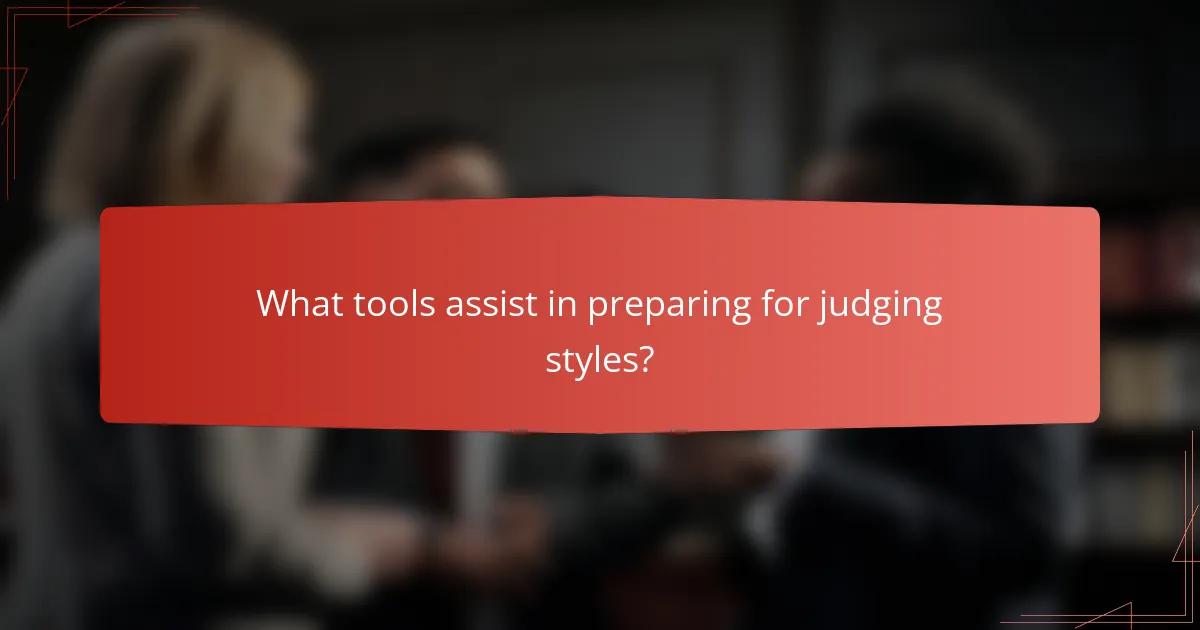
What tools assist in preparing for judging styles?
Several tools can significantly enhance the preparation for judging styles, including specialized software platforms, evaluation frameworks, and online training resources. These tools help streamline the judging process, improve accuracy, and provide valuable insights into performance standards.
Judging software platforms
Judging software platforms are designed to facilitate the assessment process by providing a structured environment for judges. These platforms often include features such as score tracking, real-time feedback, and reporting capabilities, which can enhance the overall efficiency of judging events.
Popular platforms like JudgeMe and ScoreSheet allow judges to input scores and comments seamlessly, making it easier to compile results. When selecting a platform, consider factors such as user interface, integration with other tools, and customer support.
Evaluation frameworks
Evaluation frameworks provide a systematic approach to assessing performance across various judging styles. These frameworks often outline specific criteria and standards that judges can use to ensure consistency and fairness in their evaluations.
Common frameworks include rubrics that detail performance levels for different categories, helping judges to make informed decisions. When developing or choosing an evaluation framework, ensure it aligns with the goals of the judging event and is clear to all participants.
Online training resources
Online training resources are invaluable for judges looking to refine their skills and understanding of different judging styles. These resources can include webinars, instructional videos, and online courses that cover best practices and techniques.
Platforms like Coursera and Udemy offer courses specifically tailored to judging skills, often featuring insights from experienced judges. Engaging with these resources can help judges stay updated on trends and improve their overall effectiveness in the judging process.
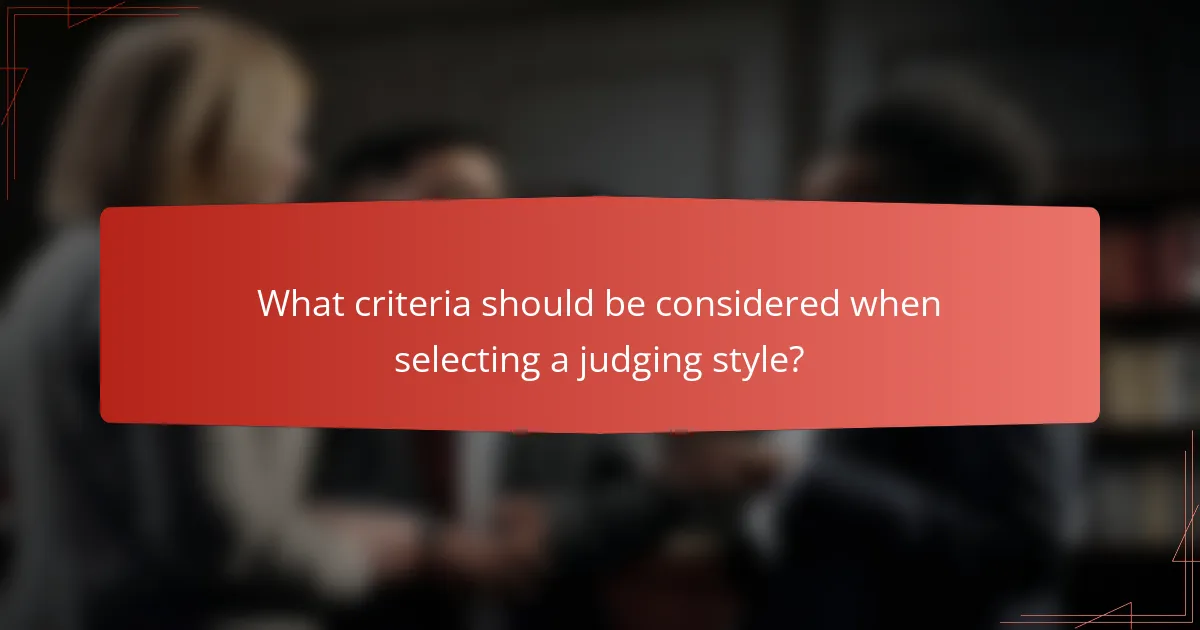
What criteria should be considered when selecting a judging style?
Selecting a judging style requires careful consideration of several key criteria, including audience engagement, compatibility with the event type, and ensuring fairness and transparency. These factors help create an effective judging process that meets the needs of participants and spectators alike.
Audience engagement
Audience engagement is crucial for maintaining interest and excitement during an event. A judging style that encourages interaction, such as live feedback or audience voting, can enhance the overall experience. Consider incorporating elements that allow the audience to feel involved, which can lead to a more dynamic atmosphere.
For example, styles that include real-time scoring or commentary can keep the audience invested. Aim for a balance where the judging process is informative yet entertaining, ensuring that spectators remain engaged throughout the event.
Event type compatibility
The compatibility of a judging style with the specific event type is essential for its success. Different events, such as competitions, exhibitions, or performances, may require distinct judging approaches. Assess the nature of the event to determine which style aligns best with its goals and format.
For instance, a talent show may benefit from a more subjective judging style that allows for personal opinions, while a sports competition might require objective scoring based on measurable criteria. Tailoring the judging style to fit the event type can enhance credibility and participant satisfaction.
Judging fairness and transparency
Fairness and transparency are critical components of any judging process. A well-defined judging style should establish clear criteria and guidelines that judges must follow, ensuring that all participants are evaluated on the same basis. This promotes trust among competitors and the audience.
To enhance transparency, consider publicly sharing the judging criteria and the scoring process. This can include providing feedback to participants post-event, which helps them understand their scores and areas for improvement. Implementing these practices can significantly improve the perception of fairness in the judging process.
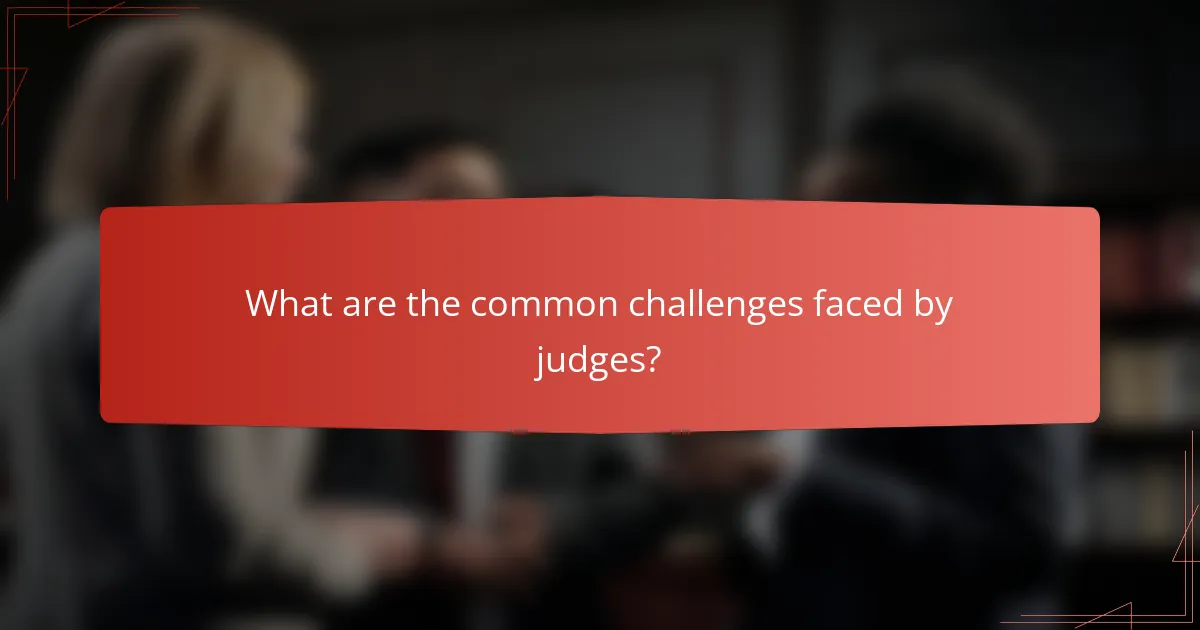
What are the common challenges faced by judges?
Judges often encounter several challenges that can impact their decision-making and overall effectiveness. These challenges include bias in decision-making, managing courtroom dynamics, and ensuring adherence to legal standards while maintaining fairness.
Bias in decision-making
Bias in decision-making refers to the unconscious preferences or prejudices that can influence a judge’s rulings. This can stem from personal experiences, societal norms, or even the specific cases presented. Recognizing and mitigating bias is crucial for maintaining impartiality in the judicial process.
Judges can face various types of bias, including confirmation bias, where they favor information that supports their pre-existing beliefs, and implicit bias, which affects their judgment based on stereotypes. To counteract these biases, judges should engage in ongoing education and self-reflection, as well as seek diverse perspectives when deliberating cases.
Practical strategies to reduce bias include implementing structured decision-making processes, using checklists to evaluate evidence objectively, and participating in bias training programs. Judges should also be aware of their own potential biases and strive to create an equitable courtroom environment for all parties involved.
